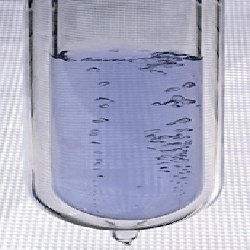https://bismuni.com/pi44ai5kt?key=b1e465821452bd5a40fd39aee6f4dc57
This is called the Triple Boil, and at that temperature, water exists as a gas, a liquid and a solid simultaneously. It requires very specific conditions to achieve, so please don't try this at home.
When helium is cooled to extreme temperatures, just a few degrees away from absolute zero (-460˚F or -273˚C), it turns into a superfluid, meaning it can flow without friction. It can climb up and over the sides of a glass, and leak through molecule-think cracks in a container.
About 96 per cent of the universe is made up of dark matter and dark energy, which are undetectable to humans. Scientists believe this is because the particles that make up these substances don’t interact with regular matter or light. Even though scientific discoveries are constantly being made about the stars, planets, and other galaxies we can see, it’s impossible to make conclusions about things that are invisible to our eyes.
1.Oxygen Has A Colour
As a gas, oxygen is odourless and colourless. In its liquid and solid forms, however, it looks pale blue.2.Bananas are Radioactive
This is strange but true , bananas contain potassium, and since potassium decays, that makes them slightly radioactive. But it’s nothing you need to worry about. You’d need to eat 10,000,000 bananas at once to die of radiation poisoning.
3.Water can exist in three states at once
This is called the Triple Boil, and at that temperature, water exists as a gas, a liquid and a solid simultaneously. It requires very specific conditions to achieve, so please don't try this at home.
4.Helium can work against Gravity
When helium is cooled to extreme temperatures, just a few degrees away from absolute zero (-460˚F or -273˚C), it turns into a superfluid, meaning it can flow without friction. It can climb up and over the sides of a glass, and leak through molecule-think cracks in a container.
5. We don't know what most of the universe looks like
About 96 per cent of the universe is made up of dark matter and dark energy, which are undetectable to humans. Scientists believe this is because the particles that make up these substances don’t interact with regular matter or light. Even though scientific discoveries are constantly being made about the stars, planets, and other galaxies we can see, it’s impossible to make conclusions about things that are invisible to our eyes.





Comments
Post a Comment